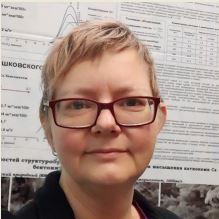Applied Geochemistry and Clay Science II
A special issue of Applied Sciences (ISSN 2076-3417). This special issue belongs to the section "Earth Sciences".
Deadline for manuscript submissions: closed (20 May 2023) | Viewed by 988
Special Issue Editors
Interests: clays and clay minerals; mineral transformation due to geological and teсhnological processes; bentonite; radioactive waste isolation; sedimentology
Special Issues, Collections and Topics in MDPI journals
Interests: radioactivity; adsorption; radionuclides; surface adsorption; porous materials; environmental radioactivity; BET surface area measurement; green chemistry technology
Special Issue Information
Dear Colleagues,
I am pleased to invite you to contribute to this Special Issue, the main focus of which is a combination of clay science, industrial mineralogy, and technogenesis.
The development of the economy leads to the formation of various technogenic processes, which can quickly lead to changes in the environment, biosphere, and technological parameters of various objects.
In this Special Issue, we invite papers discussing the impact of various anthropogenic/technogenic processes on the geological environment and biosphere, the use of clay materials in construction and the possible transformation of building materials over time, and the transformation of the chemical and mineralogical composition of clay minerals exposed to highly toxic including radioactive waste (RW). Additionally, we invite papers on the use of knowledge about clay minerals as a tool for solving various problems in the field of geological interpretation, facies analysis, art, pharmaceuticals, and, to a greater extent, for solving various environmental problems.
Clay minerals are difficult objects to study, so any research providing results aimed at methodological support of the analysis of clay materials and the development/implementation of an integrated analytical approach to the study of clay materials is of great significance.
Separately, studies aimed at studying the processes occurring in near-surface and deep geological disposal sites for radioactive waste, as well as at nuclear and radiation hazardous facilities after their decommissioning; the interaction of materials of engineered barrier systems (EBS); the transformation of radioactive waste matrices; the impact of pore water, temperature, pH of the environment. and other factors on the composition and properties of the EBS materials; and the behavior of bentonite in natural and model conditions of radioactive waste storage are invited.
Dr. Victoria Krupskaya
Dr. Ekaterina A. Tyupina
Guest Editors
Manuscript Submission Information
Manuscripts should be submitted online at www.mdpi.com by registering and logging in to this website. Once you are registered, click here to go to the submission form. Manuscripts can be submitted until the deadline. All submissions that pass pre-check are peer-reviewed. Accepted papers will be published continuously in the journal (as soon as accepted) and will be listed together on the special issue website. Research articles, review articles as well as short communications are invited. For planned papers, a title and short abstract (about 100 words) can be sent to the Editorial Office for announcement on this website.
Submitted manuscripts should not have been published previously, nor be under consideration for publication elsewhere (except conference proceedings papers). All manuscripts are thoroughly refereed through a single-blind peer-review process. A guide for authors and other relevant information for submission of manuscripts is available on the Instructions for Authors page. Applied Sciences is an international peer-reviewed open access semimonthly journal published by MDPI.
Please visit the Instructions for Authors page before submitting a manuscript. The Article Processing Charge (APC) for publication in this open access journal is 2400 CHF (Swiss Francs). Submitted papers should be well formatted and use good English. Authors may use MDPI's English editing service prior to publication or during author revisions.
Keywords
- clay minerals
- waste matrix
- bentonite
- geochemistry
- radioactive waste
- technological processes
- technogenic processes
- engineered barriers
- microbiological impact
- properties of clay materials
- analysis of clay materials
Related Special Issue
- Applied Geochemistry and Clay Science in Applied Sciences (6 articles)






